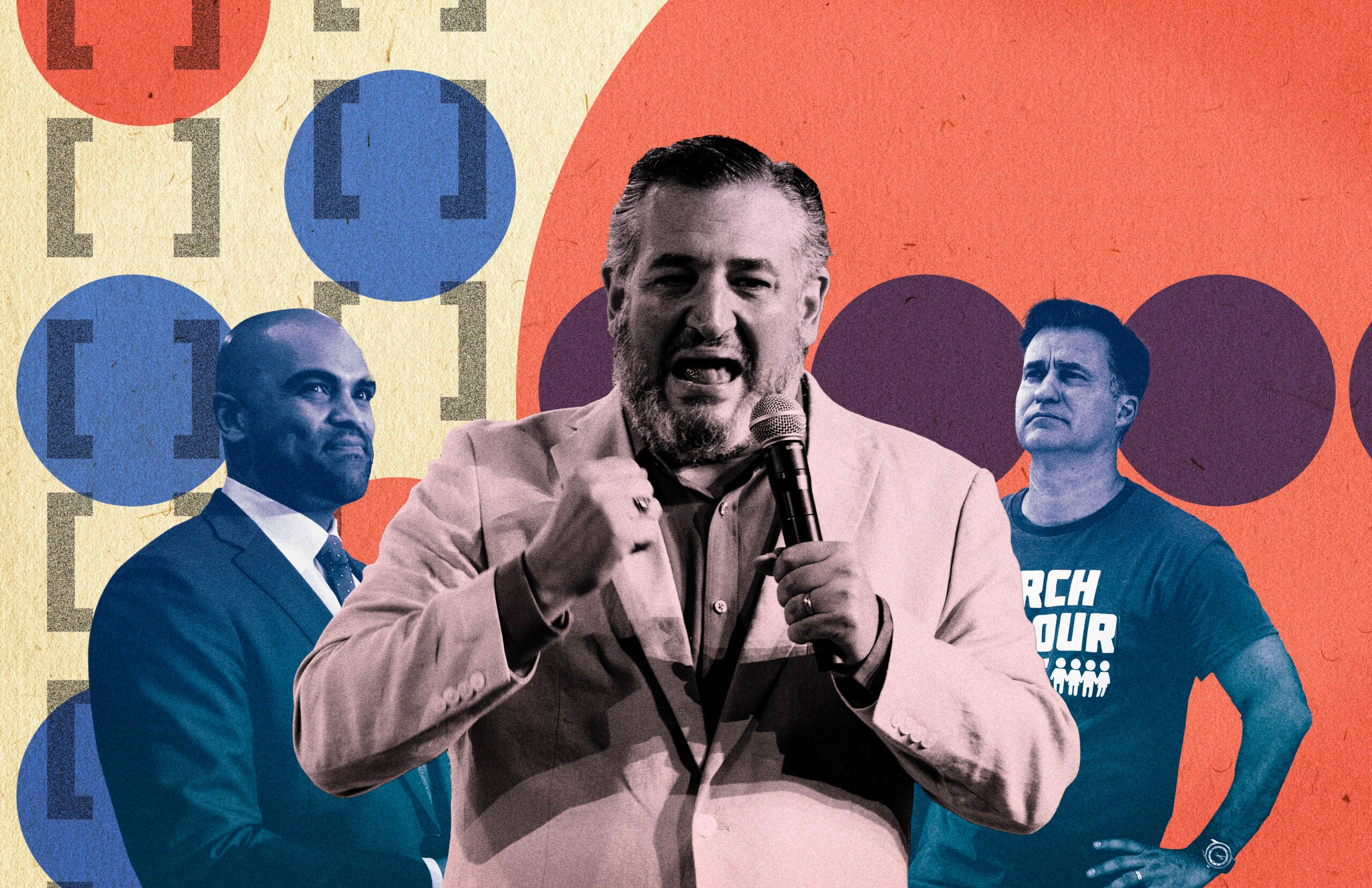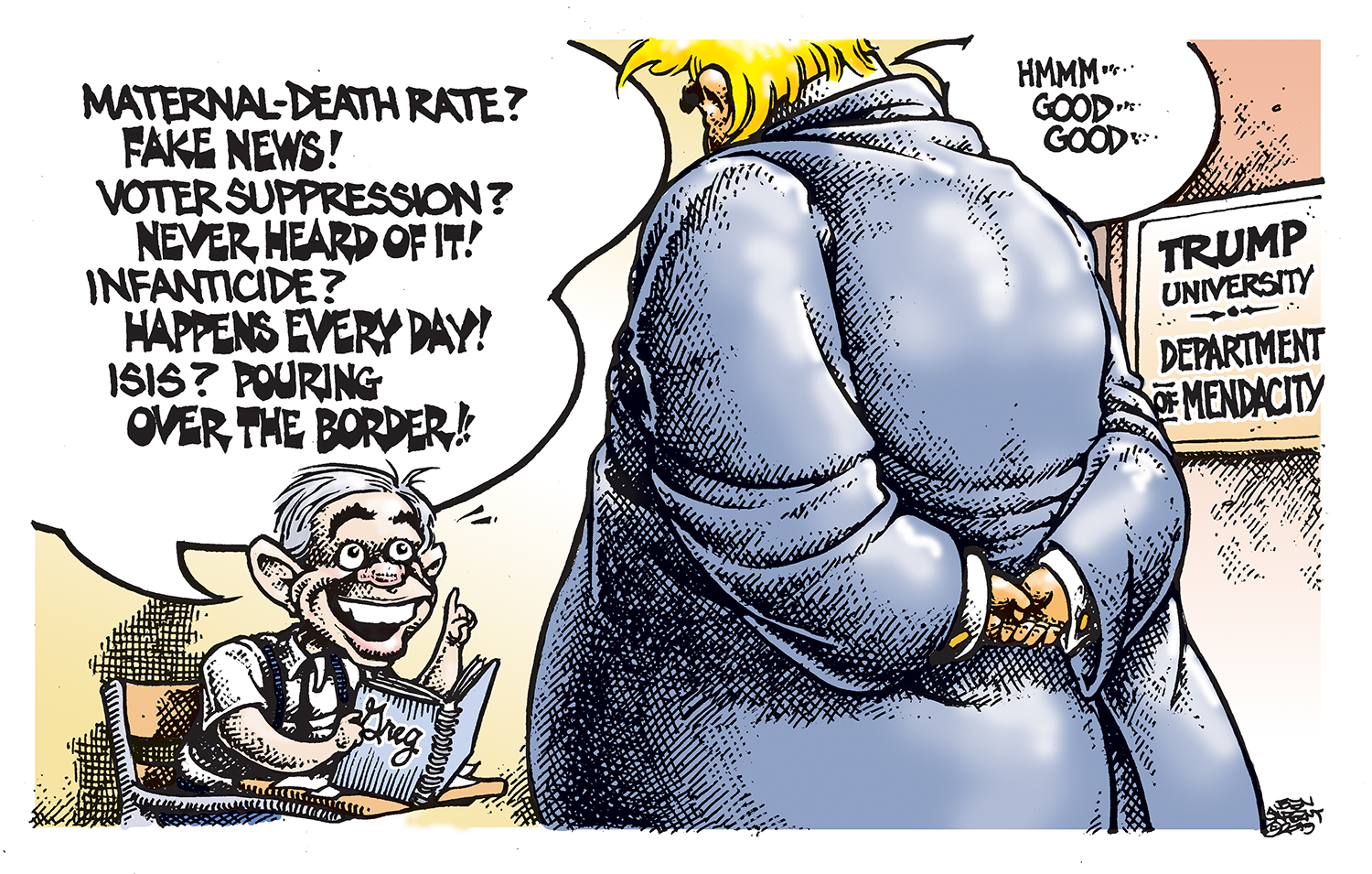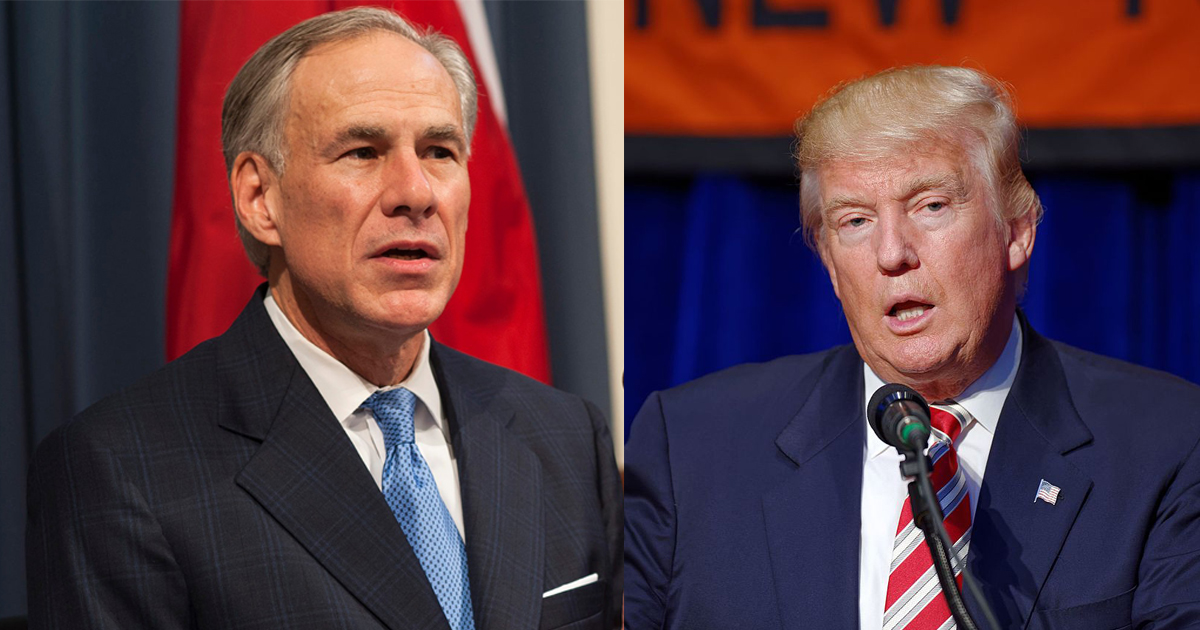
Texas’ Medicaid Waiver is a Ploy to Pay Even Less for Women’s Health
Despite state officials’ claims to the contrary, a waiver request for Texas’ low-income women’s health program wouldn’t expand access, advocates say.
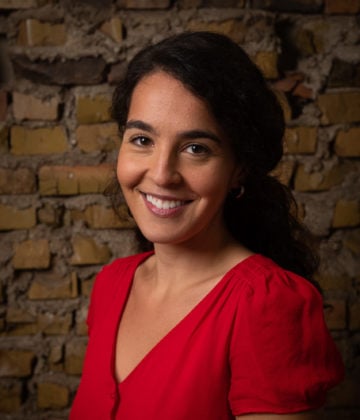
Above: Greg Abbott, Donald Trump
In its crusade against Planned Parenthood, Texas has slashed funding for family planning providers, shuttered health clinics and declined millions of federal dollars for women’s health over the last seven years. The collateral damage: tens of thousands of poor women who lost access to health services such as contraception and cancer screenings.
Now the state is pledging to expand health care access through a controversial waiver request to the Trump administration. The waiver would restore federal Medicaid funds that Texas lost when it banned Planned Parenthood from its low-income women’s health program in 2013. The program, now called Healthy Texas Women, could use help: The number of people accessing services dropped by about 40,000 from 2011 to 2016. But rather than use the federal money to add to current state funds allocated to the program, Texas wants the feds to pick up most of the tab while providing the same level of funding and services.
Texas’ waiver asks the federal government to cover about $56 million of the estimated $71 million that the program will cost in 2019. If the waiver is approved, the state will be on the hook for only about one-fifth of the total cost for the next five years. Since 2017, Texas has appropriated $85 million per year to the program, according to the state health commission, which says final numbers won’t be determined until negotiations are finished, but maintains the waiver will not decrease funds. “There will be level funding for women’s health, given the state’s commitment to it,” Health and Human Services Commission spokesperson Carrie Williams wrote in an email.
“They’re not planning to expand or doing anything different, but are supplanting state funding with federal funding for the exact same program.”
But Texas officials are framing the request as an opportunity to increase health care access, in a program that has seen dramatic drops in clients served as a result of state actions. “Granting the waiver would reinstate millions of dollars that would go directly to funding women’s health in Texas,” while advancing a “culture of life” by keeping out abortion providers and their “affiliates,” Governor Greg Abbott wrote in a letter to President Donald Trump last month. “With these federal funds, Texas women will have access to critical screening and treatment for hypertension, diabetes and high cholesterol, which are leading contributors to maternal deaths in our state.”
When citizens pointed out in public comments that the state’s plan wouldn’t increase access, the state “respectfully disagreed,” responding that the program’s goals, “as stated in the application, include increased access to women’s health, family planning, and preventive health care services.”
Stacey Pogue, a senior policy analyst at the Center for Public Policy Priorities, said that simply isn’t true. “They’re not planning to expand or doing anything different, but are supplanting state funding with federal funding for the exact same program,” said Pogue, who has traced the impact of the Healthy Texas Women Program. “The idea [of Medicaid 1115 waivers] is to ask for federal funding for an innovative idea to expand access; this isn’t doing that.”
When citizens pointed out in public comments that the state’s plan wouldn’t increase access, the state “respectfully disagreed.”
Critics worry that the unprecedented waiver, if approved, would greenlight other conservative states to kick Planned Parenthood out of their Medicaid programs. In Texas, the exclusion of Planned Parenthood, which served more than 40 percent of those enrolled in the Medicaid Women’s Health Program in the state, has resulted in a decline in contraceptive use and increase in Medicaid births in areas served by its facilities, according to a 2016 study in the New England Journal of Medicine. Last year, Abbott single-handedly ended a committee tasked with advising the state on women’s health programs, including the Healthy Texas Women program, saying it had “achieved its mandate.”
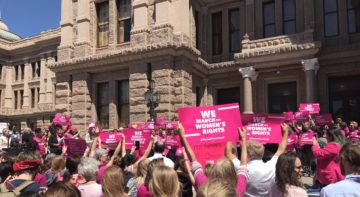
Taxpayer dollars are already blocked from funding abortions, but Texas’ extra step to block coverage of other health services at abortion clinics and their “affiliates” was deemed by the Obama administration to be in violation of Medicaid requirements. Faced with the choice to include Planned Parenthood in the provider network or lose millions of dollars in federal funding for women’s health, the state chose the latter and created a state-funded program in 2013. Now with an ally in the White House, Texas is hoping to get the money back, without including Planned Parenthood.
Texas hasn’t heard back yet on the waiver, submitted last spring. But a few days before Abbott sent his letter, the Trump administration rescinded prior “free choice of provider” guidance, signaling favor for Texas’ waiver. The state is optimistic; in fact, the 2018-2019 budget assumes the federal funds will come through, with a fraction of the cost covered by the state.
Waiver or not, Williams offered reassurance that the Healthy Texas Women program “won’t change in any way.
“This is about possible funding opportunities for the state, not about making changes to the program itself here in Texas,” she wrote. Asked to respond to criticism that the waiver replaces state funding for the program with federal funds rather than growing the program, Williams did not answer.

